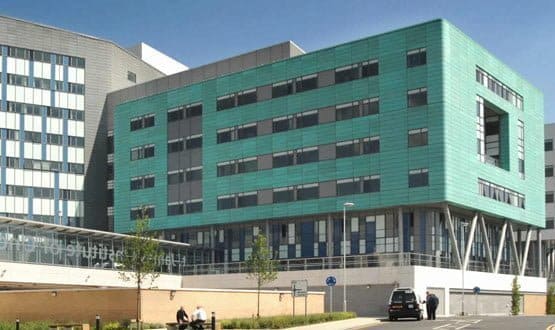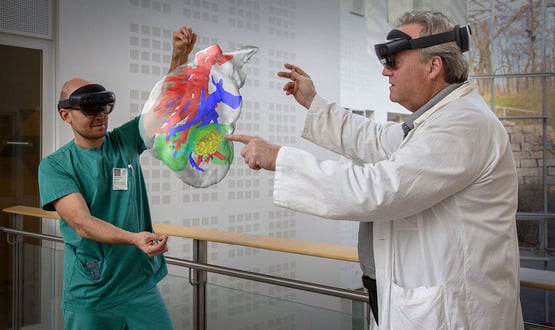Leeds credits ‘dramatic’ improvement in patient visibility to Scan4Safety
- 7 February 2018

Barcode technology means patient location can now be tracked in near real-time at Leeds Teaching Hospitals NHS Trust, its associate director of commercial and procurement has told Digital Health News.
The trust is one of six demonstrator sites in the £12m Scan4Safety programme, which is exploring whether the implementation of standard barcodes in the NHS could help improve patient safety and care.
As reported last September, Leeds has been working to link information from barcodes to its electronic patient record (EPR) and patient administration system (PAS).
“We were looking to link the EPR to be able to track the patient,” Chris Slater, the trust’s associate director of commercial and procurement, told Digital Health News. “I’m pleased to say we’re now at a point where we are capable of doing that.”
When a patient enters the hospital they are given a wristband with a GS1 standard barcode. Information from the barcode is linked to the EPR and PAS.
The result is a “near real-time” view of the patient journey, said Slater.
“We’ve now got a situation where we can scan the patient, we can scan the place, and indeed follow the patient around the hospital and update the whiteboards so that we have almost a real-time visibility of where the patients are.”
He added: “Because a time stamp is displayed, it allows accurate information to be passed to relatives if they contact the ward during a procedure, without resorting to calling the recovery ward or theatre staff, and necessitating a second phone call back to the relative.”
According to Slater, the use of barcode information in EPR and PAS will be a way in which Leeds differs from many of the other Scan4Safety demonstrator sites.
“They’ve not quite gone down that particular route of getting that visibility of patients into the patient record system,” he explained.
“This wasn’t in the original business case – it’s something we’re using the foundations of to bring additional benefit to the programme.”
He admitted that building the enabling functionality into the EPR had taken longer than anticipated.
“The link from the inventory system back into EPR has proven more complex than we thought – when we first started Scan4Safety we were just scanning into the inventory system.
“We don’t want to end up with two different scanners – one for stock and one for patients. It has to be one scan, but one from which we get both sets of information.
“We’re probably running about three to four months behind where we thought we would be. It’s not significant at the moment, but bear in mind that this falls outside the scope of the formal programme. It’s us being more ambitious.”
The six Scan4Safety demonstrator sites were named in January 2016. At the time, it was anticipated that the implementation of barcode standards in the NHS could save £800 million. But after the initial year of the programme, the estimate was revised upwards, to £1bn.





3 Comments
£1bn not £1m
Upwards from 800 million to 1 million? Someone has a strange sense of direction (or units).
It says £1bn (meaning billion)
Comments are closed.